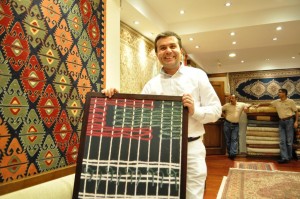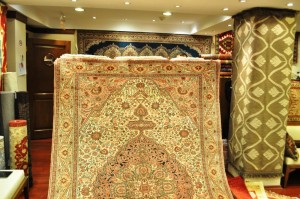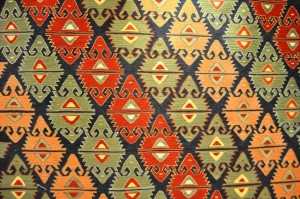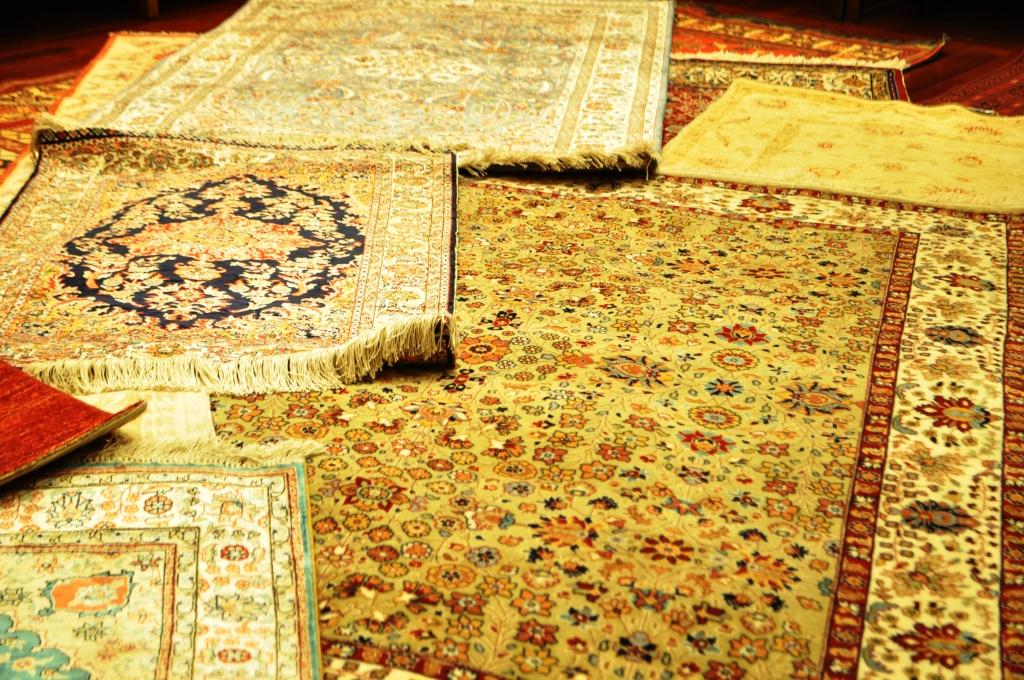This is not my first rodeo, thank goodness, because if I had never been in an Oriental rug shop before — in Egypt, in Thailand, in the suburbs of New York City — I would surely have come out of the carpet store in Istanbul having hocked my return air ticket for a beautiful, hand-knotted, one-of-a-kind carpet.
In other circumstances, maybe, but this was a trip for looking, not buying. Curiosity (and an encouraging guide, no doubt paid by commission) brought me to the rug shop located about halfway between Istanbul’s Grand Bazaar and the Sultanahmet, the hilly peninsula between the Golden Horn and the Marmara Sea, where most of Istanbul’s most famous tourist attractions are found. I went in because I wanted to know what made Turkish rugs different.
In Your Bucket Because…
- The thrill of the chase: If you’re good at bargaining, you might score a deal.
- This is the heartland of Oriental rugs.
- Even if you pay more than market price, you won’t be disappointed with the quality.
- Good for : Lovers of textiles arts and luxury.
“It’s in the knots,” explained the salesman, who had smoothly ushered me into a back room where dozens of carpets hung on the walls or lay stacked in piles on the floor. We sat on a low bench sipping piping hot tea from glasses, choosing one lump or two. Visiting a carpet shop is a little like a Japanese tea ceremony: there is a set order, a choreography, if you will. In this case, it starts with tea, then moves on to education, before finishing with the ritual emptying of the pockets.

He pulled out a large poster with a detailed drawing of a string swirling and twisting this way and that as it knotted around itself and the threads on a loom. Rugs made in the Turkish style, he said, are double knotted, which makes the knots symmetrical and anchors them in place, giving the rug more durability and heft. It also takes more work.
Aside from that, the demonstration was similar to others I’ve seen in carpet shops around the world. Typically, the sellers try to gauge your stylistic preferences — bright colors? muted? traditional geometric designs? asymmetrical modern ones? — and then dance between giving out information about tribes and patterns and traditions while laying out rug after rug after rug. The point is to get you to narrow down your choices — sort of like being forced into a marble chute — until you fall in love with the one rug left, the one that you Simply. Must. Have.
Along the way, though, you’ll learn some interesting things.
Turkish Textile Trivia

For example, how do you tell the difference between a hand knotted rug and a machine made one? Simple: Walk around it and use your eyes. Whether the rug is made of silk or wool or cotton or some combination, a hand-knotted rug will change color and sheen noticeably as you walk around it “It’s because there is a slight angle to the knots,” the salesman explained, “So they catch the light differently from different sides.”
This angle is also what makes it possible for a grand piano to sit on an Oriental rug for many years, yet not leave a permanent mark. The yarns are already bend one way, so they lie flat naturally, undamaged, even under a heavy weight.
Indeed, my Great Aunt Ena, who had several hand-made rugs in her New York apartment, used to encourage us kids to walk on them when we visited. Shuffling around in her slippers, she would claim that walking on her rugs made them more valuable.
“Absolutely!” the salesman exclaimed, when I mentioned this as I was trying to step carefully around one of his carpets. “Come, come! Walk on it! When you walk on my carpet, you are putting money into it.” It’s because walking on the carpets helps tighten the knots, he said. Aunt Ena was right all along. (Either that, or she heard a similar spiel on her own perambulations around the globe.)
At some point in the process, I started feeling the need to come up with reasons not to buy. I needn’t have bothered: The salesman had heard them all and had an answer for each. I didn’t know the size of my rooms? Any size would work. I wasn’t sure of the pattern would match? Patterns don’t need to match. And don’t even think about mentioning the trouble of shipping a carpet as a reason not to buy one: A smaller carpet can easily be folded into a surprisingly tiny package, almost as if some kind of magic were at work. And it makes sense, doesn’t it? The carpets originated with the nomadic tribes of the west Asian deserts, who had to be able to carry them from campsite to campsite. Not to mention that Istanbul carpet shops give VAT exemptions and provide shipping to the United States, all included in the price.

Prices are not necessarily great (especially with current American exchange rates) unless you are a good bargainer, which means exhibiting haggling behavior most Americans find rude. It does work, though, as I saw when an Australian tourist at the other end of the shop stubbornly stick to her original offer through countless rounds of tea, several threats to leave this minute, and finally, an agreement at a price just a little more than her original offer of about one quarter of the asking price. It did seem like a lot of work, but what she got in return is a story — and a carpet — that will last a lifetime.
Practicalities
The best advice is to set a price you can live with in advance, then have some fun haggling, and buy something you really like the look of that’s within your budget. Forget about getting a deal or making an investment: You may or you may not, but it’s luck of the draw.
- There’s no such thing as window shopping: the minute you exhibit any interest at all you are a potential customer.
- If you’re serious abut rug shopping, do some investigation on line and in person at rug shops before your trip. Have prices for various sizes and materials firmly in your mind so that you know whether $1000 for an 8 x 10 is a good price or a bad price. (There are other elements involved — material, design, provenance, dies — but you need a frame of reference; a conversational starting point for an “average” wool rug might be $200 to $300 per square meter — a price range I have frequently seen in the U.S., by the way.) There are a lot of scams being run on tourists, including misrepresenting the age of a rug, the materials, and the origin. (Not all rugs sold in Turkey are Turkish, though if you learn to look for the unique Turkish knot, you are probably seeing the real thing. No guarantees though: Some Chinese copies are increasingly high quality.)
- Turkish rugs come in two main styles: Flat-woven (kilims) and knotted. The traditional knotted rugs are finer, last longer, contain a lot more wool, require a lot more work — and, of course, cost more.
- Rugs come in wool, silk, cotton, and combinations. However, many rugs sold as silk are, in fact, not. (A tag reading “100 percent art silk” may in fact mean “artificial silk;” a silky cotton has been over the years called “Turkish silk” and “German silk” but it is not any kind of silk at all.)
- You can learn more about Turkish rugs (with no sales pressure) by visiting the Museum of Islamic Arts, located right off the Hippodrome across from the Blue Mosque.




Over dyed rugs are modern rugs which are specially designed to give stylish and vibrant look to your room. They are specially weaved, treated and washed to give a unique effect to individual rugs with 80% wool and 20% cotton and combination of different techniques and best quality Indian wool. These rugs can be well used to give deep tone to ground any contemporary home.